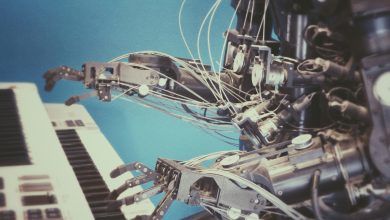From video apps to business tools, AI translation is changing how people talk, work, and share content around the world. But as AI gets better, questions about trust, feelings, and fairness are growing, too. In 2025, experts in tech, language, and business are sharing clear thoughts on what AI does well, where it still struggles, and why people are still needed. This article brings those ideas together to help everyone understand the fast changes in AI and how to use it wisely.
Why This Conversation Matters
AI is no longer limited to niche applications; it plays a role in how we communicate, learn, work, and make decisions across industries and cultures. Whether it’s generating content, translating messages, or summarizing meetings, AI shapes everyday interactions.
Understanding how these systems function, their strengths, and their limits is essential. It’s not just about using AI effectively, but doing so in a way that preserves trust, context, and human values. For businesses, creators, and everyday users, this awareness is key to navigating the AI-powered world responsibly.
This is especially true in the language industry. AI is changing how people translate and share content across different languages and cultures. Tools like translation platforms and dubbing software are helping professionals work faster and reach more people. But instead of replacing human experts, AI is being used to support them, making their work more consistent and scalable while keeping the human touch.
AI Translation Is Expanding Access to Global Content
AI is increasingly seen as a tool for global reach, especially in the media and content space. YouTube, for example, is using AI to automatically add multilingual voiceovers and subtitles — a move that’s expected to benefit both content creators and global audiences.
“If AI can translate creator videos into every language, fans around the world will be able to access content more easily,” said Neal Mohan, CEO of YouTube.
This kind of innovation reflects a growing trend: platforms want to make content instantly consumable in any language, without the high cost or time burden of traditional localization.
AI Tools Must Be Transparent and Tailored
Some innovators are building platforms that prioritize transparency in AI translation. Ofer Tirosh, founder of Tomedes, developed a tool to help users compare different engines before choosing one.
“When we built MachineTranslation.com, the goal wasn’t just to automate translation. It was to make it usable, at scale, and for real-world business needs,” said Ofer, CEO of Tomedes.
MachineTranslation.com reflects a growing demand from businesses and individuals alike: tools that explain what’s happening behind the scenes, not just black-box output.
Human Insight Still Matters — Especially for Nuance
Despite major improvements in machine translation, many experts are quick to point out that AI still struggles with cultural context and nuance.
“What we are seeing now is just the tip of the iceberg,” said Lynne Bowker, a professor of translation technologies at the University of Ottawa. “We haven’t fully grappled with the social and ethical implications of widespread machine translation”.
This gap becomes more visible when AI translations are used in sensitive or expressive contexts — like personal messages or opinionated commentary.
“It’s the sort of nuance that a machine translator would have trouble picking up on because it means filling in blanks that it will never realize are there,” one user commented after an AI-generated translation of a statement by Super Smash Bros. director Masahiro Sakurai sparked backlash.
AI Translation Is More Than Just Words — It’s About Emotion
AI dubbing and voice localization are also evolving, with companies like Deepdub focusing not only on language, but on performance. The goal is to make dubbed audio feel as authentic and emotionally rich as the original.
“We aim for what we call “UN-style.” It’s voiceover. You duck the original and overlay the translated voice.,” said Oz Krakowski, CMO of Deepdub. “We don’t change the visuals—so no lip-sync—and there’s a short delay. But in markets like Latin America, France, and Germany, that’s a totally acceptable format.”.
The shift toward expressive AI in localization signals a growing awareness that language alone doesn’t guarantee connection — delivery and tone matter, too.
A Human-Centered Approach to Language AI
Even AI developers recognize that translation is not just a technical task — it’s a human one. DeepL’s CEO, Jarek Kutylowski, emphasized this in a recent interview:
“We’ve invested heavily in research and innovation to enhance our full-service Language AI platform. Our goal is to help businesses overcome language barriers and achieve seamless communication across markets, enabling them to scale and grow.”.
Rather than viewing AI as a replacement for human translators, many in the industry now see it as a tool that needs to be shaped by human values, expertise, and empathy.
Best Practices When Using AI Responsibly
AI isn’t just transforming translation; it’s now part of everyday decision-making, content creation, customer service, and more. But using AI effectively and ethically requires thoughtful human oversight. Here are key best practices that apply to anyone working with AI tools:
- Combine AI with human judgment: No matter how advanced, AI still lacks contextual understanding and moral reasoning. Let humans validate critical outputs, whether that’s editing copy, checking analytics insights, or reviewing automated decisions.
- Define your use case clearly: Not all tasks should be handed over to AI. Reserve it for repeatable, low-risk processes where speed matters. For high-stakes work such as legal, financial, or strategic tasks, keep humans in the loop.
- Customize the input: Many AI tools perform better when given structure. Provide clear instructions, tone preferences, and style rules when possible to align outputs with your needs.
- Evaluate the output critically: Use quality control tools or manual review to ensure the AI’s output aligns with your standards. Don’t take the first result at face value.
- Safeguard data privacy: Only input data that complies with your organization’s security and privacy standards. Be cautious with sensitive or personally identifiable information.
- Train teams, not just models: Empower your team to work with AI confidently. Help them understand what it can and can’t do, and where they add value.
Using AI responsibly isn’t about resisting automation; it’s about working with it wisely. The best outcomes come when AI is a collaborator, not a replacement.
AI and Human Translation Must Work Together
The future of translation isn’t human vs. machine, it’s human and machine. As experts have shown, AI can improve speed and access, but it still needs human guidance to deliver truly effective communication. The challenge now is to build tools and workflows that combine the strengths of both. Whether you’re translating videos, websites, or internal documentation, the smartest approach is to use AI where it excels — and bring in human expertise where it’s still irreplaceable.




